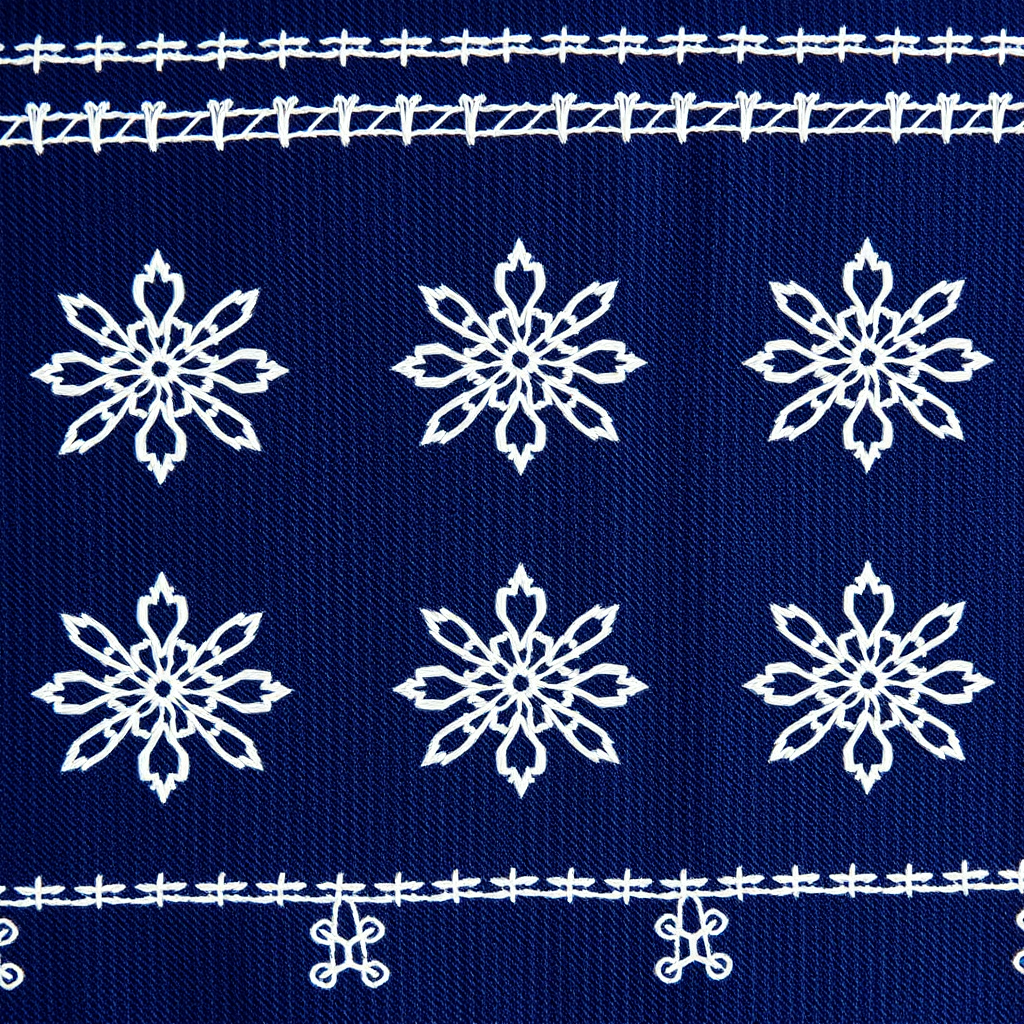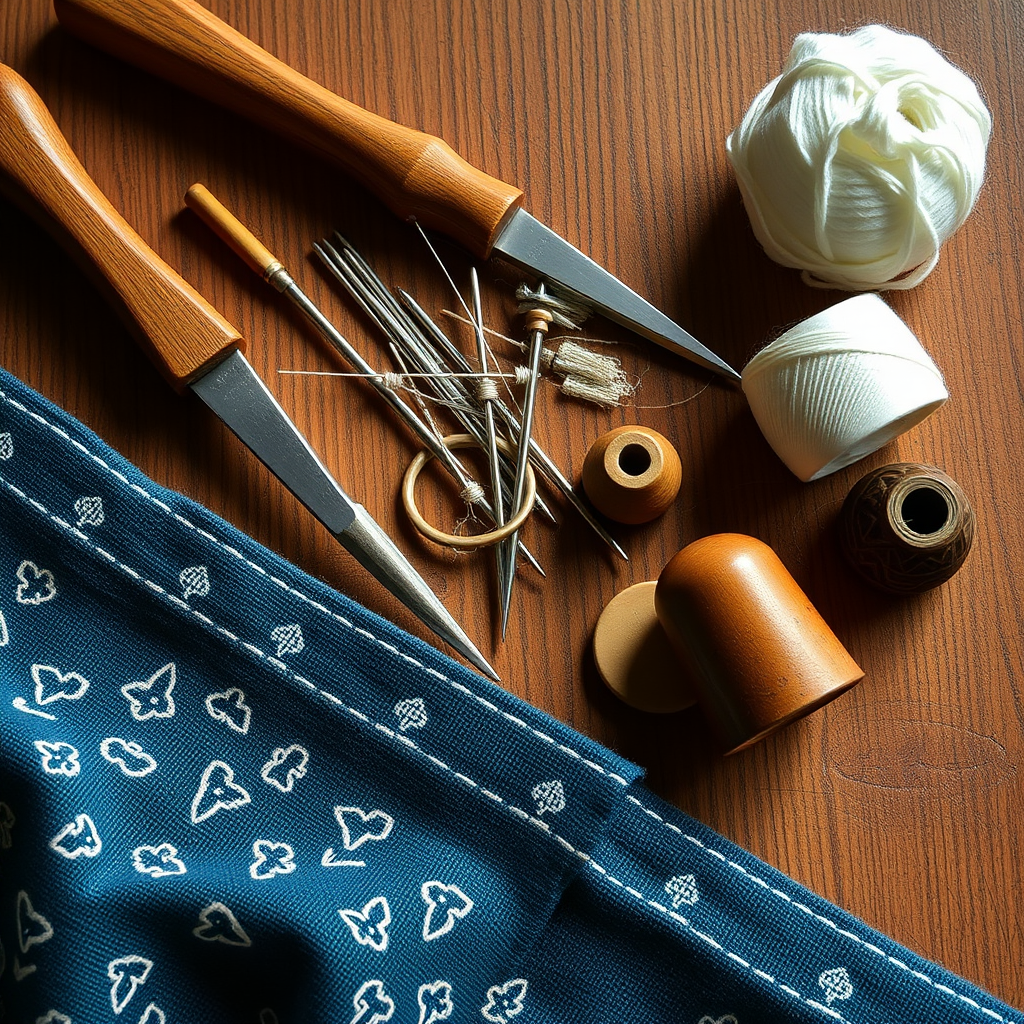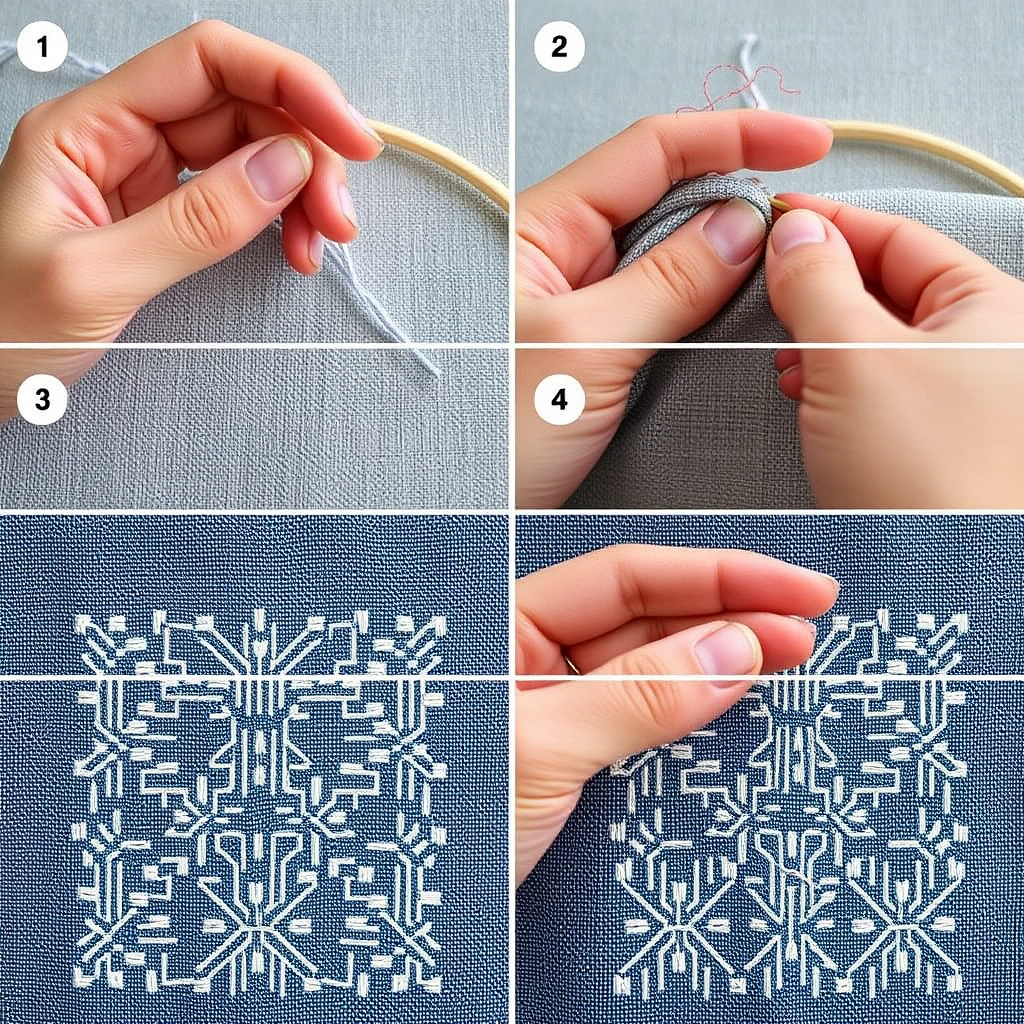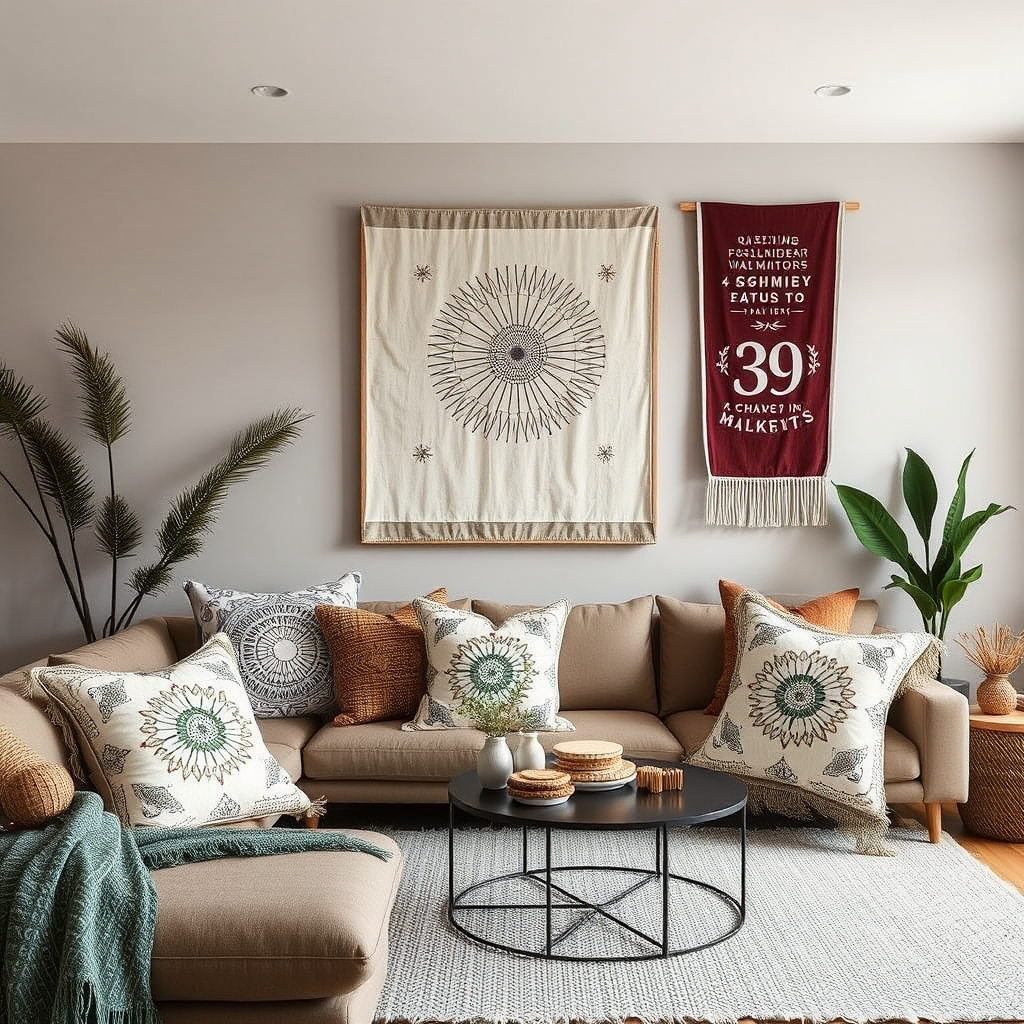Modern Sashiko Embroidery: Reviving the Japanese Art of Visible Mending

The Rich History of Sashiko
Sashiko, which literally means "little stabs" in Japanese, originated during the Edo period (1615-1867) as a practical solution for extending the life of worn textiles. Rural families, particularly in northern Japan, developed this technique to reinforce and repair their clothing and household items using simple running stitches.
What began as economic necessity gradually transformed into an art form, with distinctive patterns and regional variations emerging across Japan. The characteristic white cotton thread on indigo fabric became not just functional but beautiful, creating stunning geometric patterns that told stories of resourcefulness and creativity.

Contemporary Applications in Modern Crafting
Today's creative hobbies enthusiasts are rediscovering sashiko not just as a mending technique, but as a powerful medium for artistic expression. Modern practitioners are applying these traditional stitches to create stunning home handmade decor art pieces, from wall hangings to decorative pillows and table runners.
The technique has found new life in the slow fashion movement, where visible mending is celebrated rather than hidden. Denim jackets adorned with sashiko repairs, reinforced tote bags, and artistically mended sweaters have become fashion statements that speak to both sustainability and personal style.
Interior designers are also embracing sashiko-inspired elements, incorporating the distinctive patterns into curtains, upholstery, and decorative panels that bring a sense of Japanese minimalism and craftsmanship to modern homes.
Essential Tools for Sashiko Embroidery
One of the beauties of sashiko lies in its simplicity. The essential tools required are minimal, making it an accessible creative hobby for beginners:
- Sashiko needles: Long, sturdy needles specifically designed for this technique
- Cotton thread: Traditional white cotton thread, though modern variations include colored options
- Fabric: Traditionally indigo-dyed cotton, but any sturdy fabric works well
- Thimble: Essential for protecting fingers during extended stitching sessions
- Ruler and marking tools: For creating precise geometric patterns

Beginner-Friendly Patterns to Start Your Journey
For those new to sashiko, starting with simple patterns builds confidence and skill. Here are some beginner-friendly designs that create beautiful results:
Moyozashi (Decorative Sashiko)
This style focuses on creating beautiful patterns rather than functional repairs. Simple geometric designs like waves (seigaiha), hemp leaves (asanoha), and arrow feathers (yabane) are perfect starting points.
Hitomezashi (One-Stitch Pattern)
These patterns use a single running stitch to create intricate designs. The "shippo" (seven treasures) pattern and simple grid variations are excellent for beginners to master the basic technique.
Jūjizashi (Cross Stitch Pattern)
More complex but still accessible, these patterns create intersecting lines that form beautiful geometric designs. The key is maintaining consistent stitch length and spacing.
Sustainability Meets Stunning Aesthetics
The revival of sashiko perfectly aligns with contemporary values of sustainability and mindful consumption. Rather than discarding worn items, this technique transforms them into unique pieces of home handmade decor art that tell a story of care and creativity.
The meditative nature of the repetitive stitching also offers mental health benefits, providing a mindful escape from digital overwhelm. Many practitioners find the rhythmic motion of sashiko stitching to be deeply calming and centering.
Moreover, the visible mending philosophy challenges our throwaway culture, encouraging us to see beauty in imperfection and to value the process of repair and renewal. Each mended piece becomes a testament to the maker's skill and environmental consciousness.

Building Your Sashiko Practice
Starting your sashiko journey doesn't require extensive preparation. Begin with small projects like reinforcing pocket corners or creating decorative patches. As your confidence grows, you can tackle larger pieces and more complex patterns.
Consider joining online communities or local crafting groups where you can share your progress and learn from experienced practitioners. The sashiko community is known for its supportive and encouraging atmosphere, making it an ideal creative hobby for social connection.
Remember that sashiko is as much about the journey as the destination. Each stitch is an opportunity for mindfulness, and every completed piece represents not just a repaired item, but a moment of creative meditation and sustainable action.
The Future of Visible Mending
As we move forward in an increasingly environmentally conscious world, techniques like sashiko offer hope for a more sustainable relationship with our possessions. This ancient Japanese art form provides a blueprint for transforming necessity into beauty, waste into wonder.
Whether you're drawn to sashiko for its environmental benefits, its meditative qualities, or simply its stunning aesthetic appeal, this traditional technique offers endless possibilities for creative expression. In every stitch, we honor both the past and the future, creating home handmade decor art that speaks to our values and our creativity.
Ready to begin your sashiko journey? Start with simple patterns and quality materials, and remember that each imperfect stitch is part of the authentic beauty of this traditional Japanese craft. The art of visible mending awaits your creative touch.